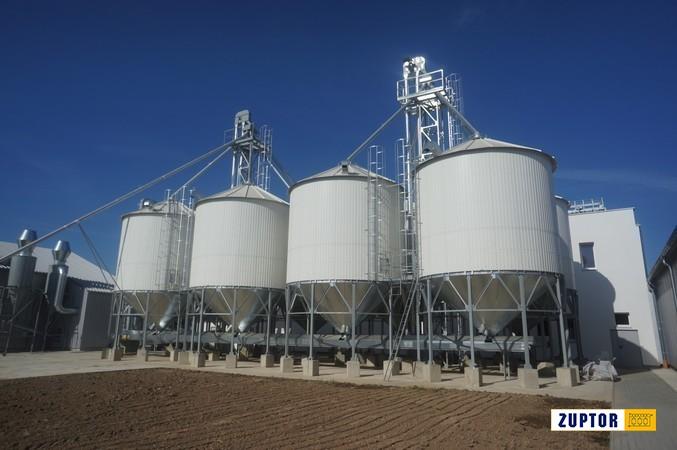
Principles of cereal storage
A harvest completed is not the end of the challenges that await the farmer. Grain storage is also one of the most important processes.
What storage conditions we provide for the grain affects its high quality and its suitability for consumption and fodder.
Storage of cereals: key requirements
When storing grain, the main aim should be to reducing the level of biological changeThe main concern is the inhibition of vital processes, such as respiration, associated with the metabolism of the grain. It is primarily the inhibition of vital processes, such as respiration, associated with the metabolism of the grain.
These processes are dependent on humidity and temperaturein which the grain is stored.
See: Grain silos | Feed silos | Fibreglass silos | Fabric silos
Exceeding the recommended standards for these two basic parameters can result in the growth of micro-organisms, bacteria and moulds, and this in turn leads to a reduction in the use value of the grain and even the development of harmful mycotoxins.
The grain must therefore be stored under conditions that meet the relevant technical and technological requirements. Temperature and humidity levels must be monitored on an ongoing basis.
Storage methods for grain
Grain is most often stored in silos. The products offered by our company grain silos are available in various capacities - from 30 to 150 tonnes. The bottom of the silo is a conical hopper, which ensures very efficient unloading of the grain by gravity.
They are made of double-skinned galvanised sheet metal, additionally externally coated to protect against the adverse effects of water and moisture. It is worthwhile that the silo is also additionally protected with a thermal insulation layer. This eliminates the problem of water condensation.
Silos should have a ventilation system installed to ensure active ventilation of the raw material during storage. The air is forced through the entire layer by a fan and exits the silo via vents in the roof. They can be used on their own or as part of a process line, and do not require an enclosure or roof.
We can also invest in solutions that constantly monitor the temperature, maintain the right humidity, ensure that the silo is heated and aired, all of which must be managed by an efficient system that is intuitive and easy to use. This will ensure, for example, that the grain does not start to rot or ferment.
In order to obtain the best possible storage results, it is necessary to take into account the various factors influencing the process, including the amount of grain, the length of storage time, the purpose of storage, the observance of storage rules and conditions, as well as all kinds of costs associated with storage.
To reduce losses during such storage, the grain should first be subjected to a process of cleaning, drying and active aeration.
